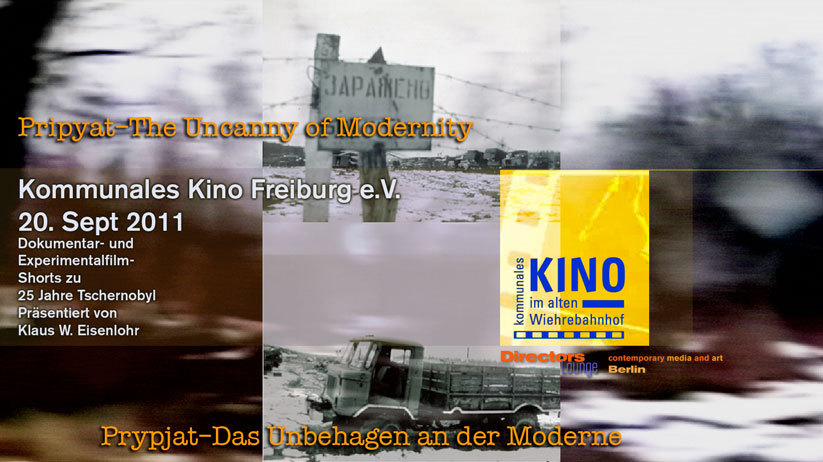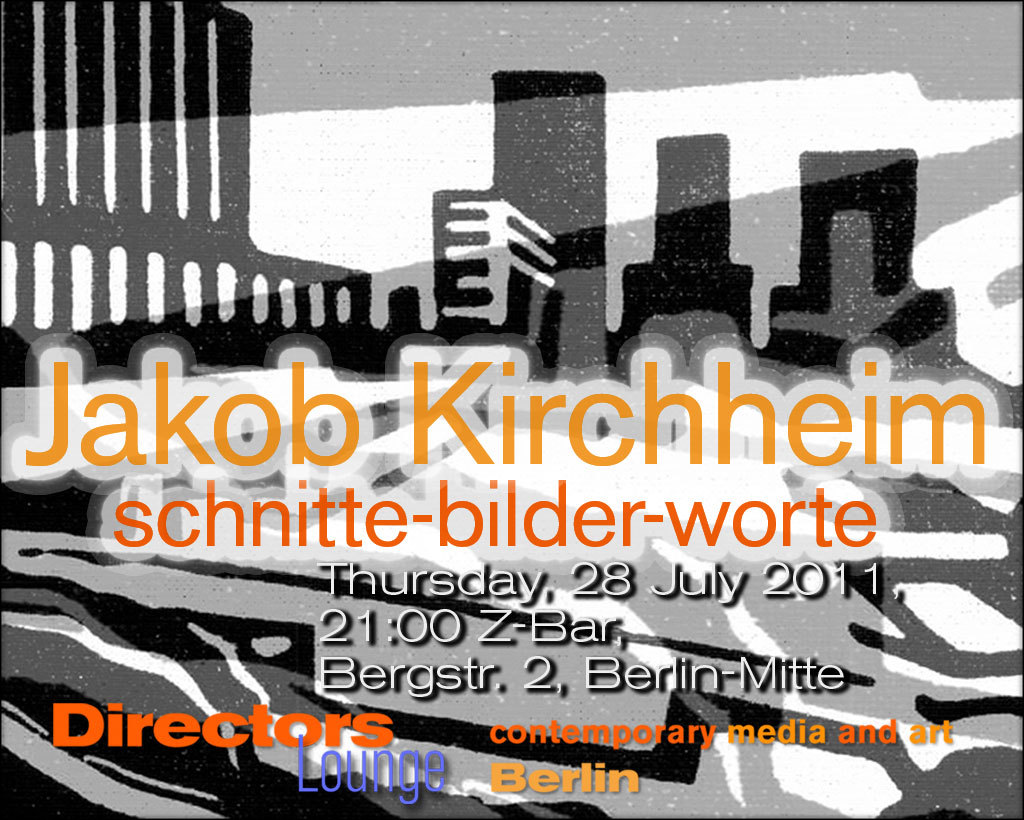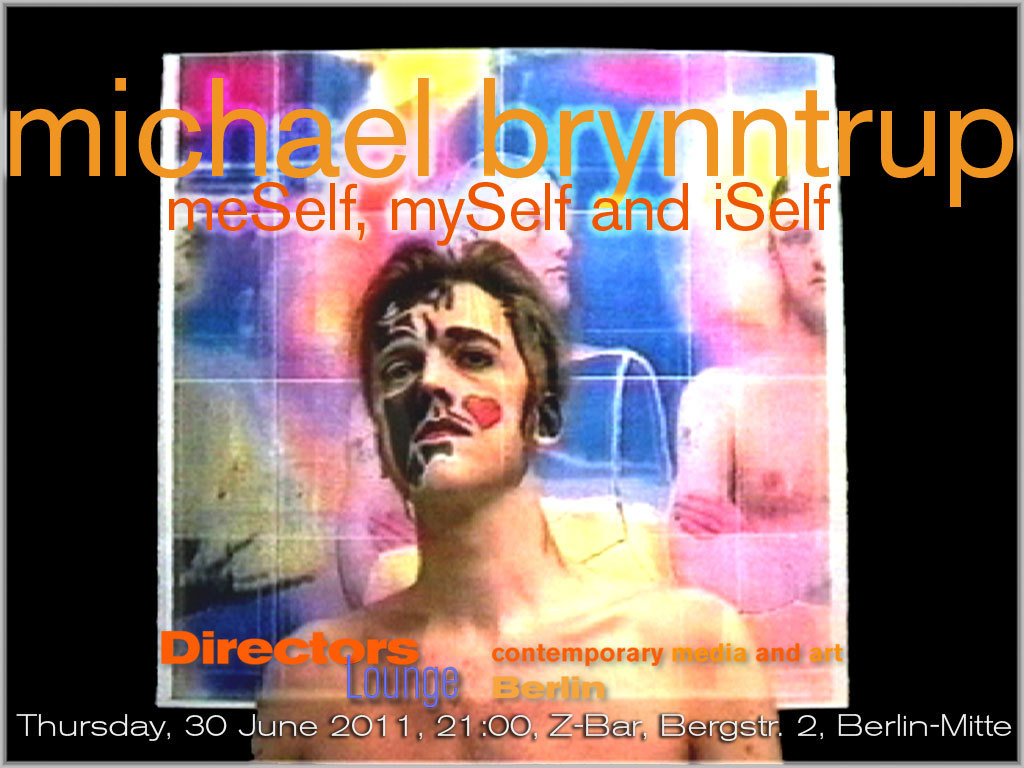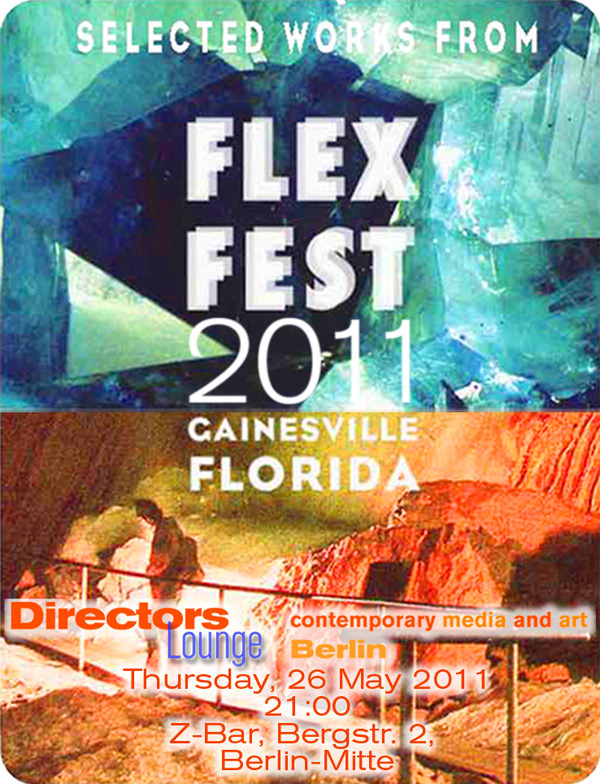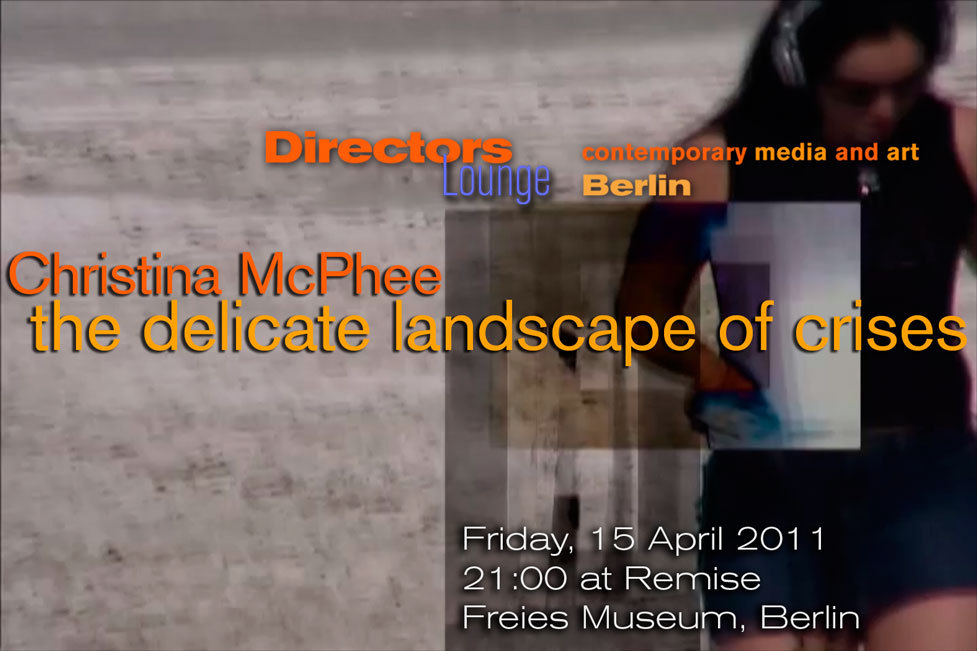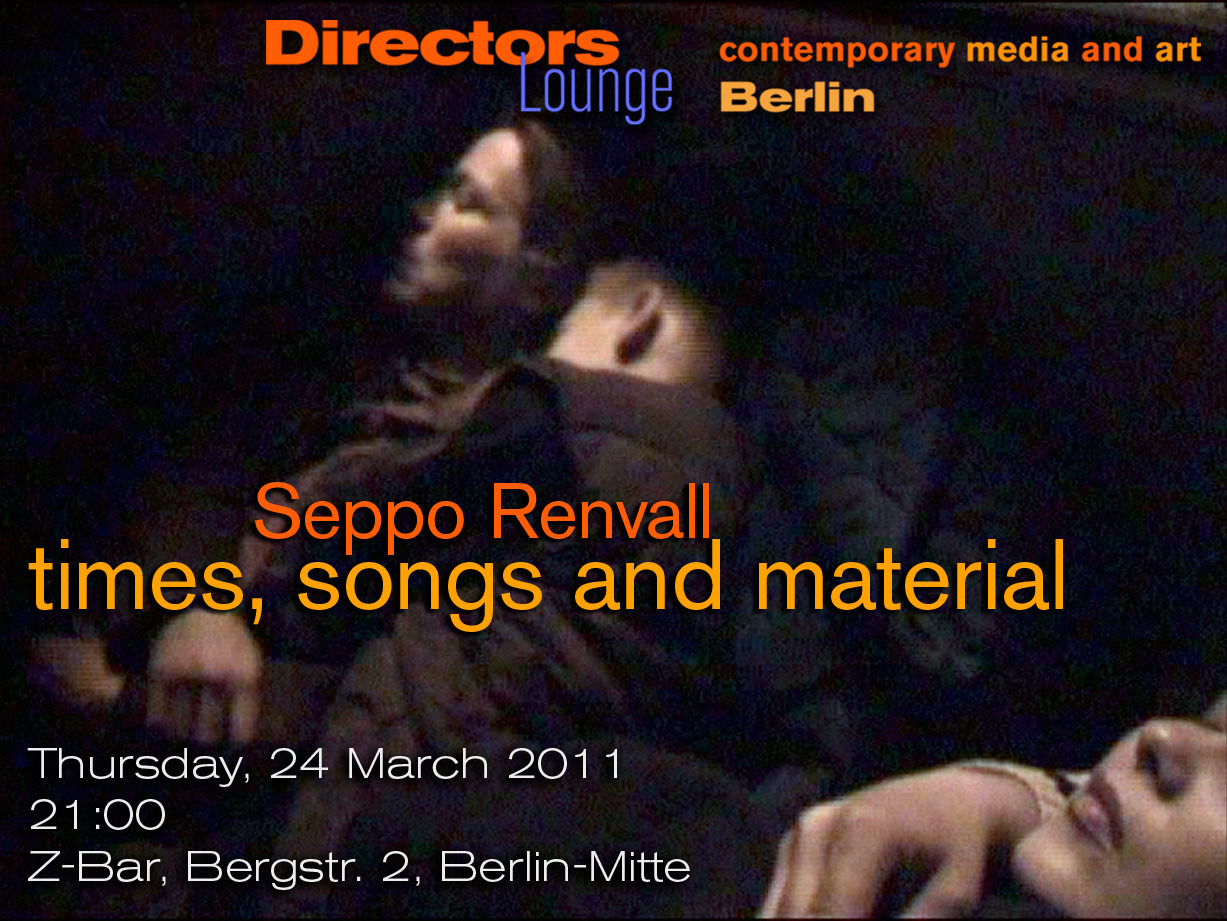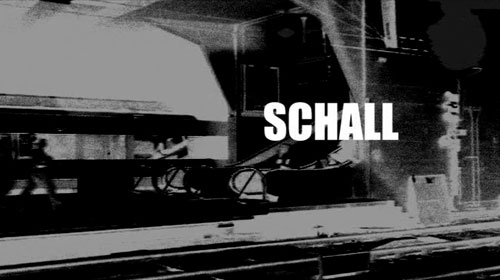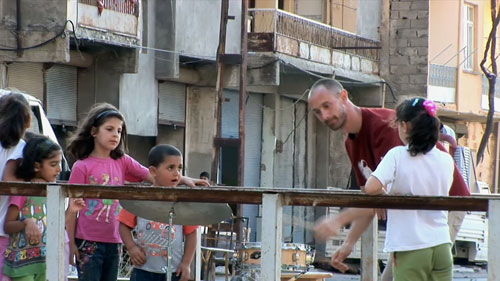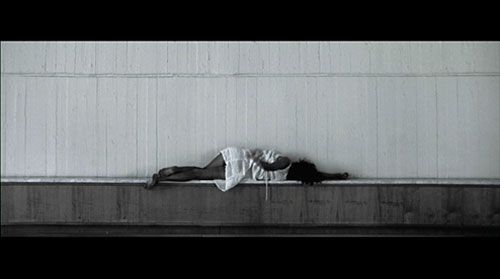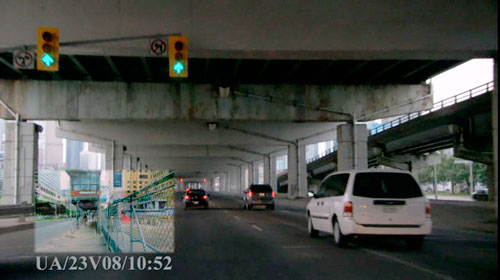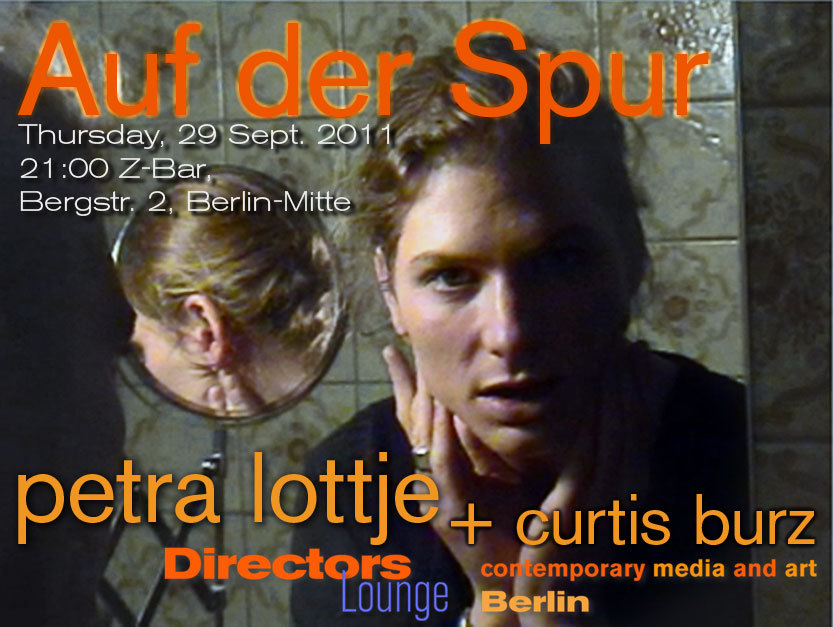
Directors Lounge Screenings:
Petra Lottje + Curtis Burz
AUF DER SPUR
video works
Donnerstag, 29. Sept 2011
21:00
Z-Bar
Bergstraße 2
10115 Berlin-Mitte
Directors Lounge präsentiert ein Programm mit Petra Lottje und Curtis Burz. Beide Künstler, aus ganz unterschiedlichem Hintergrund, Bildende Kunst bei Petra Lottje und die dokumentarische Tradition europäischen Kinos bei Curtis Burz, befassen sich mit zwischenmenschlichen Beziehungen. Ob diese nun eigentlich „auf der Spur“ sind (on track) oder „abseits der Spur“ (off track) bleibt auch über die ambivalente Benutzung der Medien oder des Recordings bei beiden Künstlern offen, oder hängt davon ab, welchen Blickpunkt der Beobachter (Zuschauer) selbst einnehmen will.
‚Sprache bildet in zahlreichen Videos Petra Lottjes den Ansatzpunkt der Auseinandersetzung. Sie kombiniert Tonsequenzen aus unterschiedlichen Spielfilmen, verleiht ihnen körperlichen Ausdruck und setzt sie in neue Zusammenhänge. … Heute ist jeder Protagonist seines eigenen Films, doch wie eigen ist dieser Film wirklich? Und wie sehr sind wir selbst Medien kollektiver Stereotypen?’ (Susanne Husse, 2010)
In drei Episoden aus dem dokumentarischen Essay „Ich habe Dir nie erzählt, womit ich mein Geld verdiene“ (2011) erzählt Curtis Burz von Menschen, die sich scheinbar in der Mitte der Gesellschaft bewegen, aber doch nur „vom Rand“ aus zuschauen. Die Geschichten basieren auf Interviews, die der Regisseur in der Zeit 2008-2010 geführt hat.
(Kuratiert von Klaus W. Eisenlohr)
Links:
https://www.facebook.com/IchHabeDirNieErzaehltWomitIchMeinGeldVerdiene

